Cornstarch is a key ingredient in a variety
of recipes - from shortbread cookies to meatloaf. It is essentially a
pure, fine starch powder extracted from corn kernels. When heated,
cornstarch is very good at absorbing water. For that reason, it’s most
commonly used as a thickening agent for soups, stews, and gravies, but
it can also be used as a meat tenderizer in marinades, or serve as a
crispy coating for fried foods. Cornstarch is often favored with those
with celiac disease, as it’s derived from corn rather than wheat, making
it gluten-free.
If you have a recipe that calls for
cornstarch but no cornstarch on hand, don’t worry. There are plenty of
other ingredients that can replace it, many of which you may already
have in your pantry. Below, we list the best cornstarch substitutes for
thickening, frying, and even baking.
1. Wheat flour
Unlike cornstarch, wheat flour contains protein and fiber, as well as
starch. It can be an effective thickener, but you will need a larger
amount to get the same effect as cornstarch. Brown and whole-grain flour
contain more fiber than white flour, and while it’s possible to use
them for thickening, you're likely to need much more of them to get the
same result.
In general, it’s recommended that you use twice as much white flour as
cornstarch for thickening purposes. For example, if you need 1
tablespoon of cornstarch, use 2 tablespoons of white flour. To avoid
clumps while thickening sauces with flour, mix it with a small amount of
water to form a paste. You may also want to cook your sauce or stew for
an extra two or three minutes to eliminate any raw flour flavor.
2. Rice flour 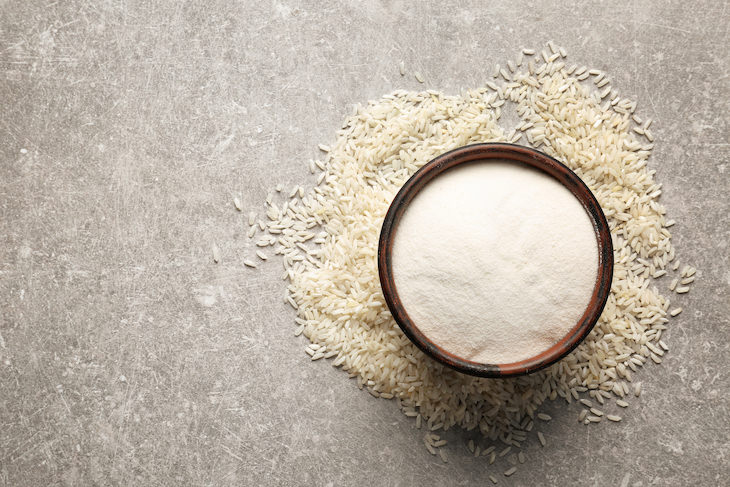

One clear advantage of rice flour is that
it’s gluten-free, just like cornstarch. It is a powder made of finely
ground rice often used in Asian cuisines as an ingredient in desserts,
rice noodles, or soups.
You will need twice as much rice flour to substitute cornstarch as a
thickening agent. The ratio is the same as it is for wheat flour. It
works especially well in puddings, as rice flour holds up well to high
heat. Rice flour can be used with hot or cold water to make a paste.
Alternatively, you may mix it with butter or oil to make a roux.
3. Arrowroot flour
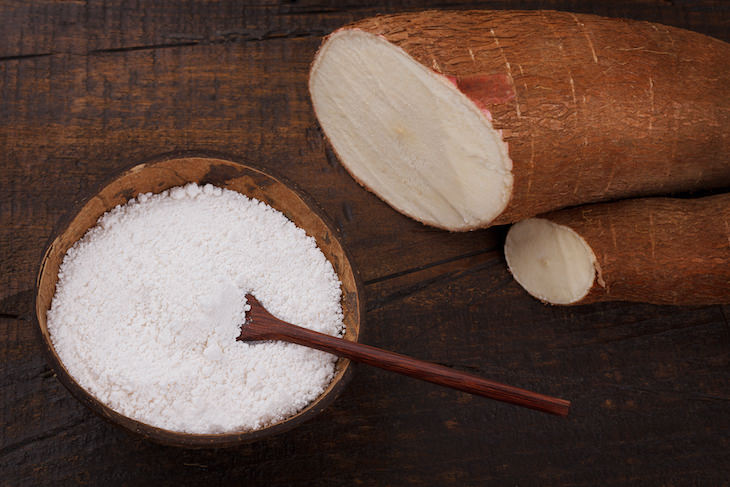

Arrowroot is a starchy flour made from the
ground roots of the Maranta genus of plants. While it may be a less
common ingredient in your pantry, many chefs mark it as their favorite
cornstarch substitute. This is because arrowroot can produce the same
thickening effect and glossy finish as cornstarch at a 1:1 ratio. Not
only that, but arrowroot flour also contains more fiber than cornstarch
and it doesn’t alter the flavor at all.
You can use arrowroot to thicken almost anything, with the exception of
dairy-based recipes, as the combination can result in a slimy texture.
It’s recommended to mix 2 tablespoons of arrowroot in ½ a cup of water
and pour the mixture into whatever you’re cooking to thicken it.
4. Tapioca flour
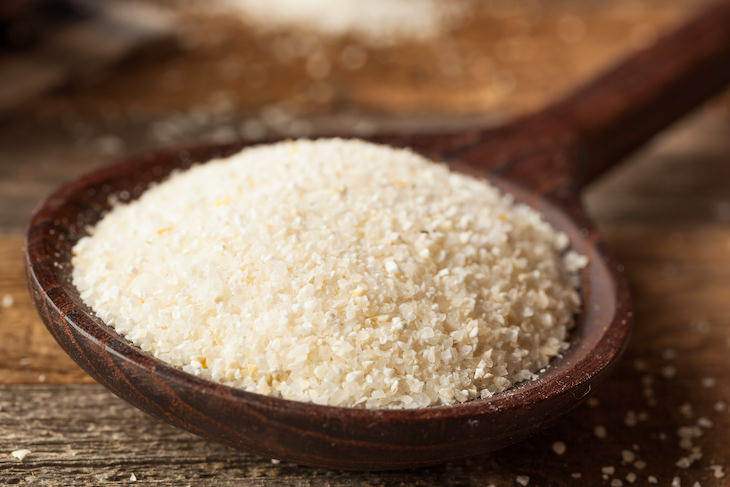

This gluten-free flour is made from the
processed starch product extracted from cassava, a root vegetable from
South America. It is an excellent thickener with a neutral flavor. If
you plan on freezing your leftovers, tapioca flour may not be the best
choice, as it doesn’t hold up very well when frozen. Also, boiling
tapioca starch can sometimes result in a stringy texture. Most chefs
recommend substituting 1 tablespoon of cornstarch with 2 tablespoons of
tapioca flour.
5. Potato starch
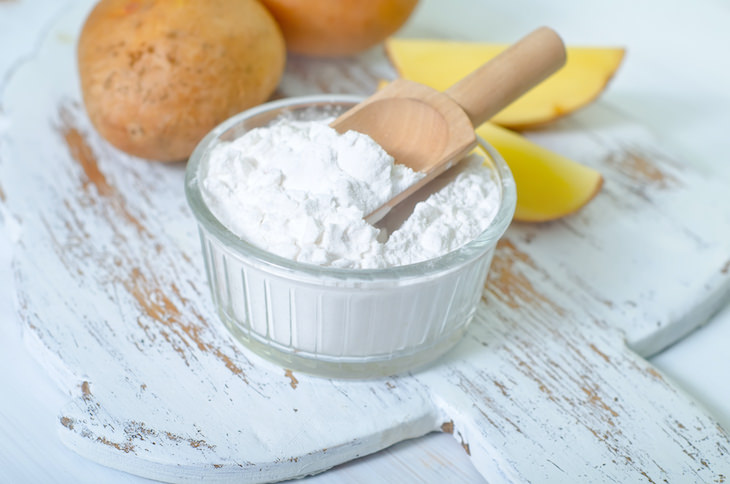

Potato starch may not be the best choice
for thickening purposes, but it is a phenomenal pick for frying. The
reason why potato starch doesn’t work well as a thickener is that
extreme heat may cause the starch to break down, so it won’t absorb
moisture properly and lose the thickening effect. However, its structure
does allow it to provide a rigid coating for food cooked shortly in
high heat.
It is also gluten-free and bland in taste, so it won’t add any unwanted
flavor. If you choose to substitute cornstarch for potato starch, do it
in a 1:1 ratio.
6. Ground flaxseed
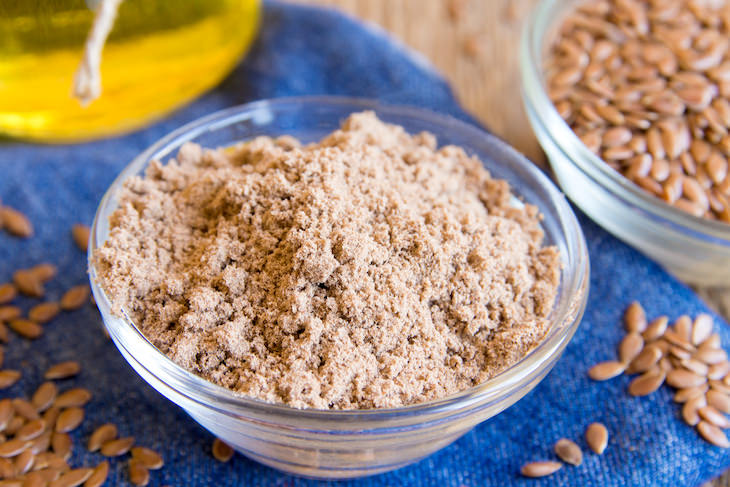

If you’re looking for a cornstarch
substitute that is well-suited for baking, ground flaxseed is the way to
go. This is due to the gritty consistency of flaxseed flour. Ground
flaxseed is very absorbent and forms a gelatinous texture when mixed
with water. It is also high in soluble fiber, so using it instead of
cornstarch can boost the fiber content of your dish.
Rather than adding it directly into the recipe, make a paste mixing 1
tablespoon ground flaxseed with 4 tablespoons of water (the ratio is ½
tablespoon of found flaxseed to 1 tablespoon of cornstarch).
7. Glucomannan


Glucomannan is a water-soluble powder
derived from the roots of the konjac plant. It is also known as the
elephant yam and can be seen in the picture above. Glucomannan is
extremely absorbent and forms a thick, colorless, odorless gel when
mixed with hot water, which makes it an excellent thickener.
Glucomannan is pure fiber. Therefore, it contains no calories or carbs,
making it a popular substitute for those who follow a low-carb diet.
It’s also prebiotic, which means that it feeds the good bacteria in your
large intestine and supports gut health. It is generally recommended to
use around a quarter of a teaspoon of glucomannan for every 2 teaspoons
of cornstarch. It thickens at quite low temperatures, so mix it with a
little cold water before you pour it into your food to avoid clumping.
Other thickening techniques
In case you don’t have any of those cornstarch substitutes on hand,
there are several other techniques worth knowing that will help you
thicken your recipe.
Blended vegetables: To make a tomato-based sauce thicker and richer
in nutrients, add some pureed leftover veggies.
Sour cream or Greek yogurt: Adding these ingredients to a sauce can
help make it thicker and creamier.
Simmering: Cooking food for a longer time at low heat will help
evaporate some of the liquid, resulting in a thicker texture.